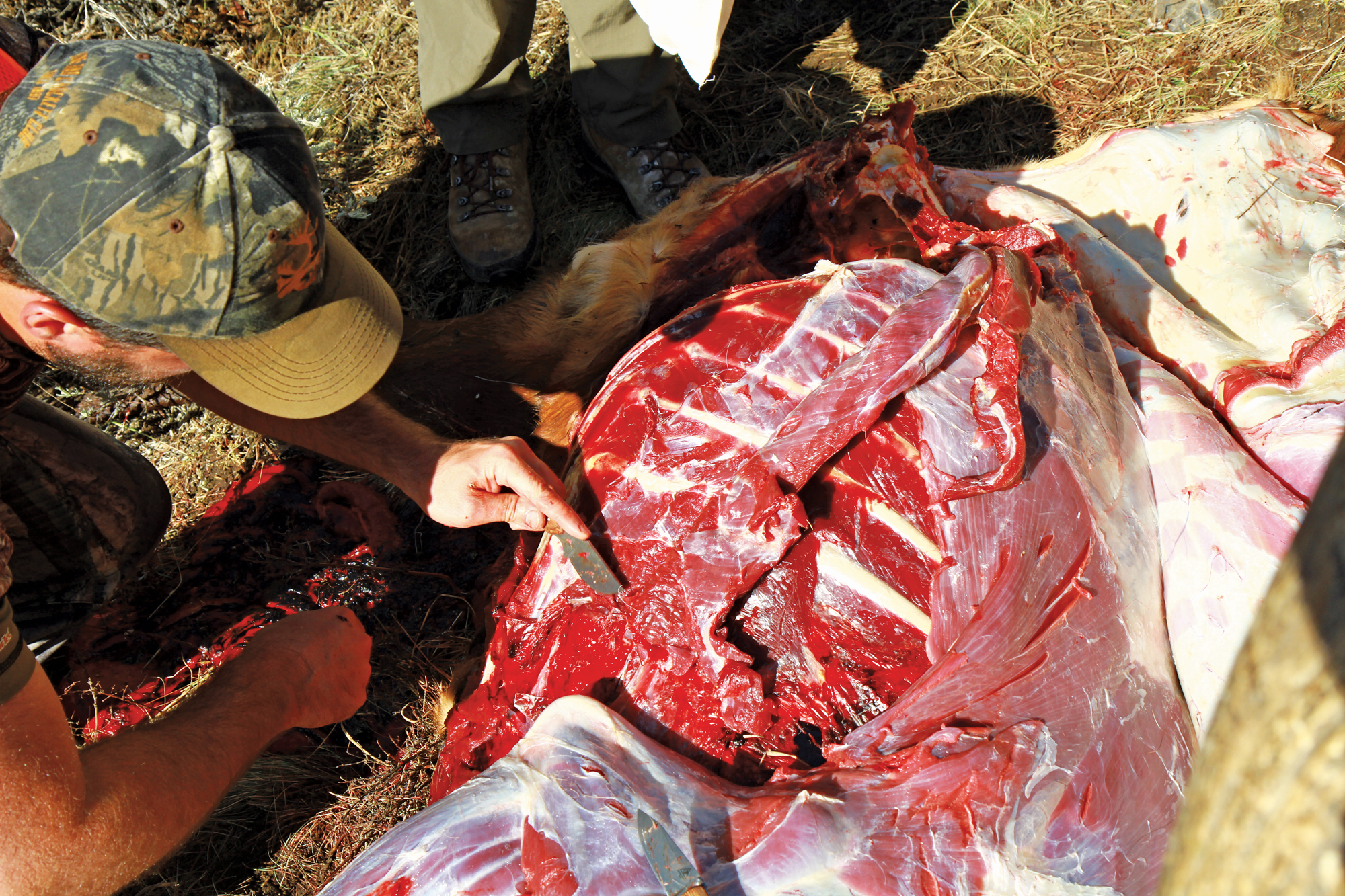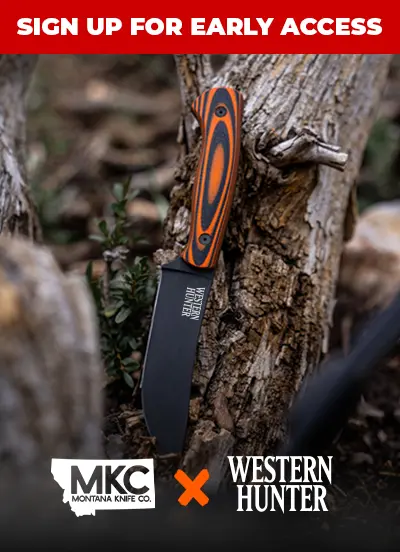
NOTICE: Certain links on this post may earn a commission for Western Hunter Magazine from Amazon or our other affiliate partners when you make a purchase. Thank you for your support.
More than the Minimum
Taking all the meat you can should always be job #1
We spend a lot of time talking about how to break down an elk on the mountain and care for the meat afterward. It’s all a practical and necessary part of elk hunting. However, in these writings, I’ve been making a very basic assumption. It’s the assumption that most hunters out there felt like I did; that meat is one of the primary reasons we hunt, and that it’s our ethical responsibility to take all we can.
Waste Not, Want Not
I’ve always been heavily influenced by my grandpas, great-uncles, and other old-timers when it comes to hunting. That generation – who lived through the Great Depression and much meeker times – wasted little to nothing on an elk carcass. Most of those old-timers would leave those bones whiter than a pack of hungry coyotes.
We live in a different era than those old-timers. They weren’t under scrutiny from the public back then, yet they generally had a high ethical standard in regard to minimizing waste. Now, hunting is often under fire, putting hunters in a situation where what we do must be defensible. The absolute single-most defensible argument and position in favor of hunting is that it’s for sustenance! So, while we all enjoy a large set of antlers and the adventure of the hunt, if we can’t ultimately fall back on our #1 line of defense – that this meat feeds our families and doesn’t go to waste – then we lose credibility fast. Basically, if we’re wasting meat, we’re not walking the walk.
Recently, through social media, it’s become pretty apparent to me that there are more people than I realized who only “high grade” what they take, leaving a lot of very edible meat lying on the hill. In short, they are short quartering – taking only the hindquarters, shoulders (cut off at the armpit, not including peripheral meat), backstraps, and perhaps the tenderloins.
In some states, laws regarding meat removal seem to have taken the low road, only requiring that much. However, in my opinion, if you can look at an elk after those parts are removed, still see 50 lbs. of meat remaining in the neck, ribs, rib covering, flank, and scrap, and are totally okay with walking away from that, then we’re not doing our job as hunters, whether it meets the legal letter of the law or not.
While laws are the legal minimum, our own set of ethics is another level higher. It’s what we use as our guide to know we did the right thing and can sleep comfortably at night. Walking away from that much meat is simply unnecessary and wasteful.
On that social media site where I saw hunters arguing over the ethics of taking neck and other scrap meat, one hunter basically said, “I personally don’t find neck and rib meat palatable.”
That statement really made me squint in disbelief and throw my hands up in the air. I wondered out loud, “Does he know what hamburger, sausage, salami, etc. are made of?! Hint: it’s all the scrap meat, trimmings, neck, and ribs! There is nothing “unpalatable” about it.
Is there anything more succulent than that soft, dark red meat that comes from the ribs? Taking that portion of meat will only upgrade the overall taste of your wild game burger. Unless time, daylight, and/or logistics are a very serious concern, I always try to take the rib meat. Same with the neck. While it isn’t steak, it’s still perfectly edible red meat. It makes fantastic burger, stew meat, salami, sausage, and roast.
Revisiting the Basic Dismantling of an Elk
With a few cuts, twists, and turns, you should be able to quickly remove the hindquarters at the hip socket, filet out the backstraps and tenderloins, and slice off the shoulders.
In another 5-10 minutes, you can easily remove the neck meat, from the point of the shoulder all the way up to the top of the neck (or close to it). Then, stripping the ribs is far easier than it looks and should only take a couple minutes. There’s more meat there than most people realize.
Situational Differences
If time of day and the current temperature both allow, I always try to take extra time to remove all the meat between the ribs and also all the fine trimmings that I might have missed while removing the bulky, bigger pieces. It simply just doesn’t take that long to do so. On most of my elk, I feel it’s my obligation and I can afford those extra five minutes.
On perhaps 10%-25% of my elk, though, I may pass on stripping the rib meat if I feel that it puts the rest of the meat at risk (hot temperatures) or puts myself in danger logistically. For example, on a bull I took last fall, I was hunting alone, so I worked feverishly to break him down before dark. However, I was in somewhat new terrain and I was soon going to lose daylight altogether. It was vitally important for me to get the meat hung and my backpack load shouldered and up to the ridge before last light, so I could get a line-of-sight bearing. In this case, I still took the meat that covered the ribs, but skipped taking the inner rib meat.
Consider Taking More
If you truly believe you’re a responsible hunter, and a strong ethic is what guides you, then walking away from perfectly edible meat seems counter to all that you embody. I’d like to encourage you to at least think about taking more than the bare minimum.
We all have our own set of ethics, and talking about them can be difficult, because there’s a fine line between policing/educating each other and trying to force our beliefs on someone else. However, in the case of meat, which is supposed to be the main reason we all do this, this matters. I know that I’ll continue to do my best to toe the line and take all I can, and that I’ll also expect my hunting partners to do the same. If they don’t see things in a similar light, then that’s a bridge I’ll have to cross. Luckily, I’ve never had that happen.
Internal Organs
While there shouldn’t be much arguing over the ethics behind taking all possible basic red meat, the question then comes up regarding internal organs. This is definitely “next level” meat procurement, and much more comes into play regarding emotional stigma, palatability, etc.
I personally like liver and heart, and a pretty good percentage of hunters actually do take some internal organs, but I don’t think there are too many who would fault you if you elected to leave them behind. However, if space, time, and effort allow them to be taken, you might consider taking them with you even if you don’t like them. There will be plenty of friends or family who will gladly take them off your hands.


